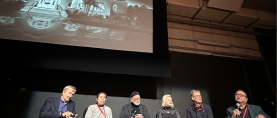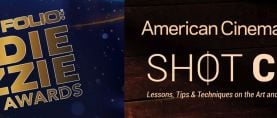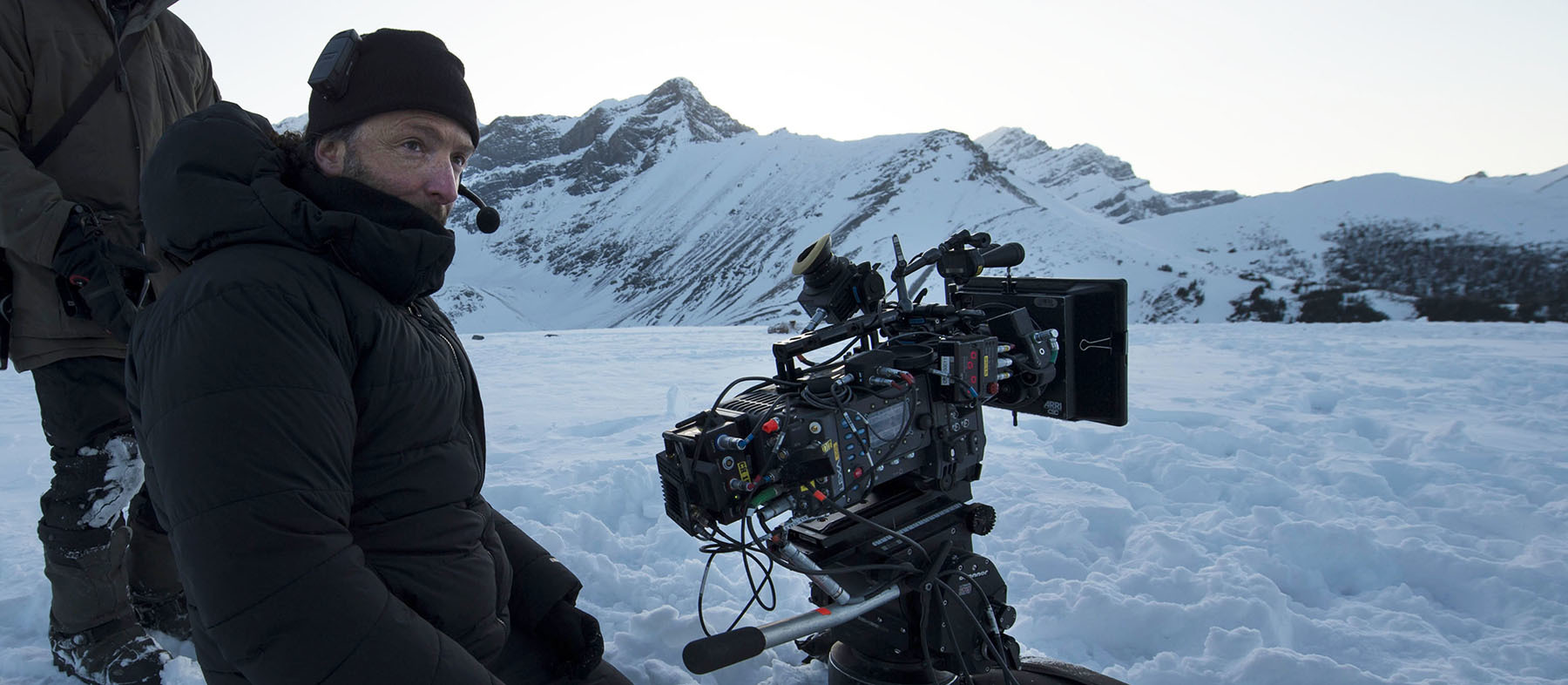
ICS 2016 – Part III: A Model of Collaboration in The Revenant
The International Cinematography Summit offered a unique opportunity for motion picture professionals to discuss and demonstrate ideas.
ICS 2016
For this unique four-day event, the American Society of Cinematographers invited peers from around the world to meet in Los Angeles, where they would discuss professional and technological issues and help define how cinematographers can maintain the quality and artistic integrity of the images they create.
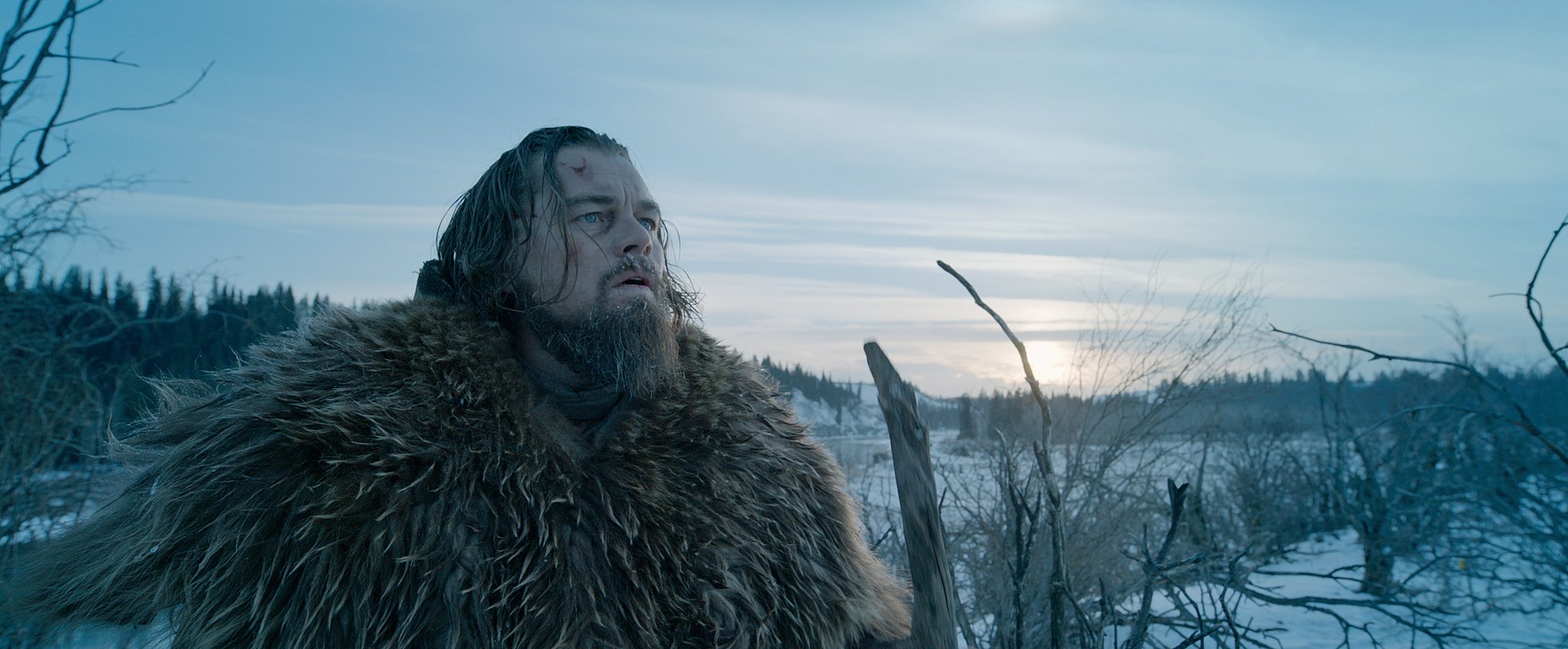
Focusing on the essential art of collaboration, particularly within the camera team, this segment of the International Cinematography Summit (ICS) took place inside the prototype Dolby Cinema that the company has built inside the former Vine Theatre on Hollywood Blvd., near the ASC Clubhouse.
From the outside, the venue appears to be a dilapidated, disused relic of days long gone by, yet the interior has been outfitted with state-of-the-art Dolby Vision HDR laser projection and 38 Dolby Atmos speakers, covered by transparent cloth. Dolby senior director of content development Bill Villarreal introduced the contingent of ICS participants to the space, noting the theater presentation’s 1,000,000:1 contrast ratio. (A standard DCI theater system offers a contrast ratio of about 2,000:1.) As one cinematographer in attendance remarked, it was the first time he’d seen such deep blacks in a movie theater.
This was the perfect venue to spend two hours with cinematographer Emmanuel “Chivo” Lubezki, ASC, AMC; DIT Arthur To and supervising finishing artist Steven Scott, talking about and looking at clips from their award-winning project The Revenant. The discussion was moderated by journalist Michael Goldman, a frequent contributor to American Cinematographer who wrote extensively about the production for an AC cover story (see the January 2016 issue).
Prompted by Goldman to explain the early conversations he had with director Alejandro González Iñárritu, Lubezski recounted that the two met “many, many years ago” in Mexico. “Although we didn’t grow up together, we shared important moments growing up and in our professional life,” he said. “We had a frame of reference. He sent me the script for The Revenant, saying, ‘I don’t know why I want to do the movie.’”
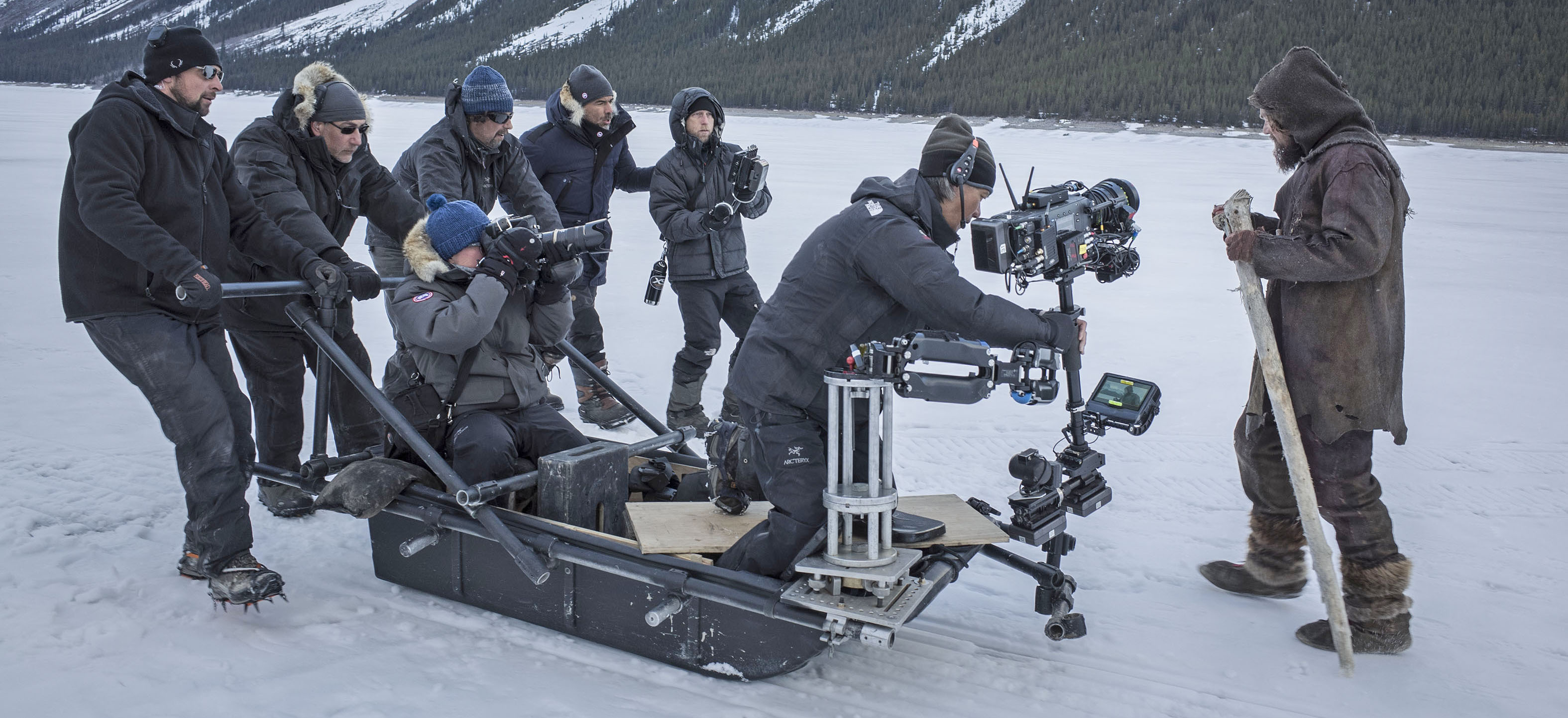
Lubezki remembered that he was excited about doing a period piece in the wild; neither he or Iñárritu were interested in the revenge part of the movie. “He first mentioned wanting to make the movie immersive, to make the audience cold,” Lubezki recalled. When they were first on location in Canada, daylight lasted only a few hours and conditions were constantly changing. “I didn’t trust anyone with the iris the way I did with Arthur,” he said, referring to his DIT. “The environmental challenges were the worst,” added To, who reported that he and Lubezki first developed their tight style of communication while working together on Last Days in the Desert, directed by Rodrigo García. “Going with [Chivo] to dailies and color also helped me a lot,” Arthur said. “We learned to be on the same side.”
That camaraderie paid off once they were in the harsh, freezing conditions of Alberta, Canada. “We were on the move, hopping in a helicopter and going on top of the mountain,” said To, who added that they threw an ice fishing tent over the monitor to protect them from the elements. The important thing, says Lubezki, was to be there, with the actors, rather than off in a video village. “Arthur allowed me to do that,” he said. “For me, it was essential to be with the actors.” To added that, “we always looked at monitors calibrated by Technicolor, and they were always the same.”
With regard to the project’s digital intermediate, Lubezki reported that when he was invited to do this movie, “I said if we don’t have 15 weeks in DI, I don’t want to do the movie.”
“After going through Gravity, Birdman and my projects with Terry Malick, I knew pretty much what I wanted to do with this movie and how long it would take,” he said. “I didn’t want the effort of going into the mountains unless I could do it that way.”
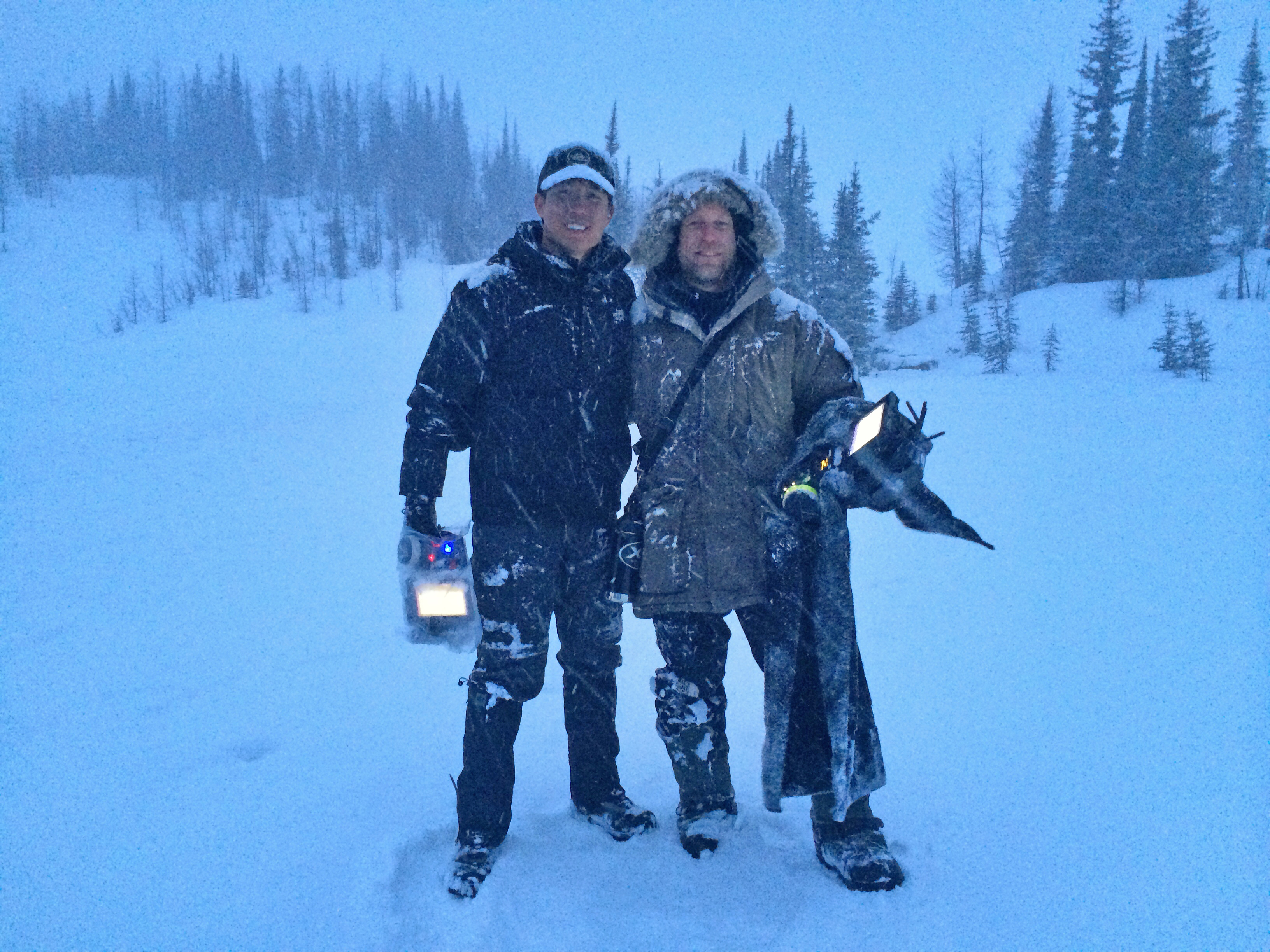
“Without the collaboration of the studio, Technicolor, the timers, we couldn’t have done it,” he said. In fact, the DI took 14 weeks, very close to what Lubezki originally asked for. “Chivo is amazing at knowing how long something would take to do,” said Scott. “It always took as much time as he originally predicted in the beginning. Sometimes I would say I could get something done in two days, and he’d say to me, no, take five days, and he was right.”
Scott says his goal was to figure out “how can we liberate Chivo within the DI.”
“By the time we started the DI, we really had a good game plan, although we were constantly evolving and assessing it,” Scott continued. “We would do a DI cut, separate from the edit and that meant Chivo could do whatever he wanted. When we go to another angle, the dissolve blends it.”
Lubezki remembered that when he was a photographer earlier in his life, he “got addicted to dodging and burning in the photo lab.” Scott reports that, “There’s nothing in that [final] image that wasn’t in that negative, and wasn’t dodging and burning.”
Showing a clip of the movie’s first scene — in which Native Americans attack a group of trappers — Lubezki noted that, once the location was found, they rehearsed for two weeks with the camera team, stunt people, DIT and other crew. “That was the moment where the collaboration started to come up,” he said. “It was like actors in a play. Everybody is bringing ideas how to solve situations. Rehearsals helped us solve those.”
Capturing the scene with the aurora borealis was another feat of collaboration. “We were at 9,000 feet on top of a mountain when we saw our first aurora borealis,” Lubezki described. “But the cameras were down the mountain. We went down the mountain and two hours later were back on top at 1:00 am, in minus 30 degrees.”
For a scene in which Leonardo DiCaprio’s character goes over a series of waterfalls, said Lubezki, “we tried so many things and most of them failed. It was a combination of Leo in a tub, stunt men, plates, and a lot of DI,” he says. Scott showed frame grabs from the “months of rotoscoping” it took to make that scene work.
“We all know that filmmaking is collaborative,” concludes Lubezki. “Everybody had to fuse into one organism to make this movie. We became that strong of a team. Alejandro allowed that to happen. And the conditions were so brutal that the team that stayed in the movie — and a lot of them left — became very, very close.”


